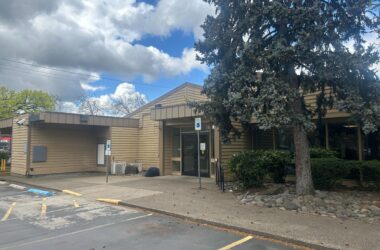
Oregon’s population continues to spike, but housing supply has not kept pace and neither has wage growth.
Consequently, the availability of affordable housing for lower-income people is scarce throughout the state; Creswell has certainly not been immune to these pressures.
As such, Creswell City Council this month unanimously voted to approve text amendments to the Creswell Development Code related to accessory dwelling units (ADUs).
These dwelling units are an interior, attached or detached, residential structure that are used in connection with, or accessory to, a single family home. They can come in the form of an attached or separate cottage, or detached garage buildings that are made suitable as living spaces.
To address the lack of housing supply, House Speaker Tina Kotek introduced legislation to remove barriers to development. Among the provisions is the requirement that counties and cities over a certain population allow ADUs in areas zoned for single-family dwellings. This new requirement became effective on July 1.
”There is a lot of interest and energy around the construction of ADUs on residential streaming from the significant housing crisis due to people moving to Oregon,” Maddie Phillips, city planner, said at this month’s city council meeting. ”This is one way the legislation suggests we can take steps to alleviate some pressure, to construct these ADUs on property and loosen the constraints that would not allow that to happen.”
According to the Planning Commission’s Finding of Facts, the amendment allows for more density of residential development in proximity to services, provides rental housing choices and satisfies lower income housing needs.
The construction of ADUs could also possibly lead to less households experiencing a ”cost burden” due to a smaller housing footprint and additional opportunities to lower income households, the findings document states.
ADUS are exempt from the housing density standards and any parking requirements of the residential district, due to the small size and low capacity levels.
Two public hearings were required in order to make these amendments, both of which were fulfilled. One was held before the Planning Commission on on June 21 and one before city council on July 9.
During the two hearings, three residents spoke of concerns relating to ADUs and density. More houses, more people, more cars, more traffic and accessibility issues were discussed.
These concerns were ”contemplated deeply by the Planning Commission,” Phillips said, but ultimately concluded the benefits outweigh the drawbacks.
”Generally speaking the idea and concept of making amendments will open up opportunities rather than close them,” she said.
There can be a maximum of three dwelling units on one lot – the primary and two ADUs, with one dwelling unit attached to the primary structure and the other detached.
ADUs must conform to the following standards:
▲ Total lot coverage on a residential lot that may not exceed a total of 55 percent lot coverage and cannot exceed 800 square feet of floor area;
▲ The building height of detached ADUs, such as separate cottages, cannot exceed 110 percent of the primary unit’s height as a means to maintain the community look and feel;
▲ Primary access to an ADU must be provided from a public alley; however, the City may require improvements to the alley, such as resurfacing;
▲ Detached structures cannot be located less than 10 feet from the primary structure. ADUs must maintain the setback standards specified by property zoning designation related to front, rear and side setbacks and must retain at least a five-foot buffer from any propertyline or outbuilding, such as a garden shed;
▲ And a landscape hedge or fence may need to be installed on the property line seperating a detached ADU from an abutting single-family dwelling;
▲ Single-family attached housing with three or more dwelling lots and attached duplex housing (two or more consecutively attached duplexes) must comply with standards intended to control development scale, avoid or minimize impacts associated with traffic, parking and design compatibility, and ensure management and maintenance of common areas;
▲ Subdivisions containing three or more consecutively attached single-family dwellings, and developments with two or more attached duplexes, must provide vehicle access to all such lots and units from an alley or parking court;
▲ And any common areas such as landscaping, private tracts, common driveways, private alleys, building exteriors must be owned and maintained by a homeowners association or other legal entity.
This amendment brings the City of Creswell into compliance with the stipulations and intent of the new State law regarding ADUs.
More to come on ADUs in upcoming editions of The Chronicle.
More to come on ADUs in the upcoming editions of The Chronicle.







